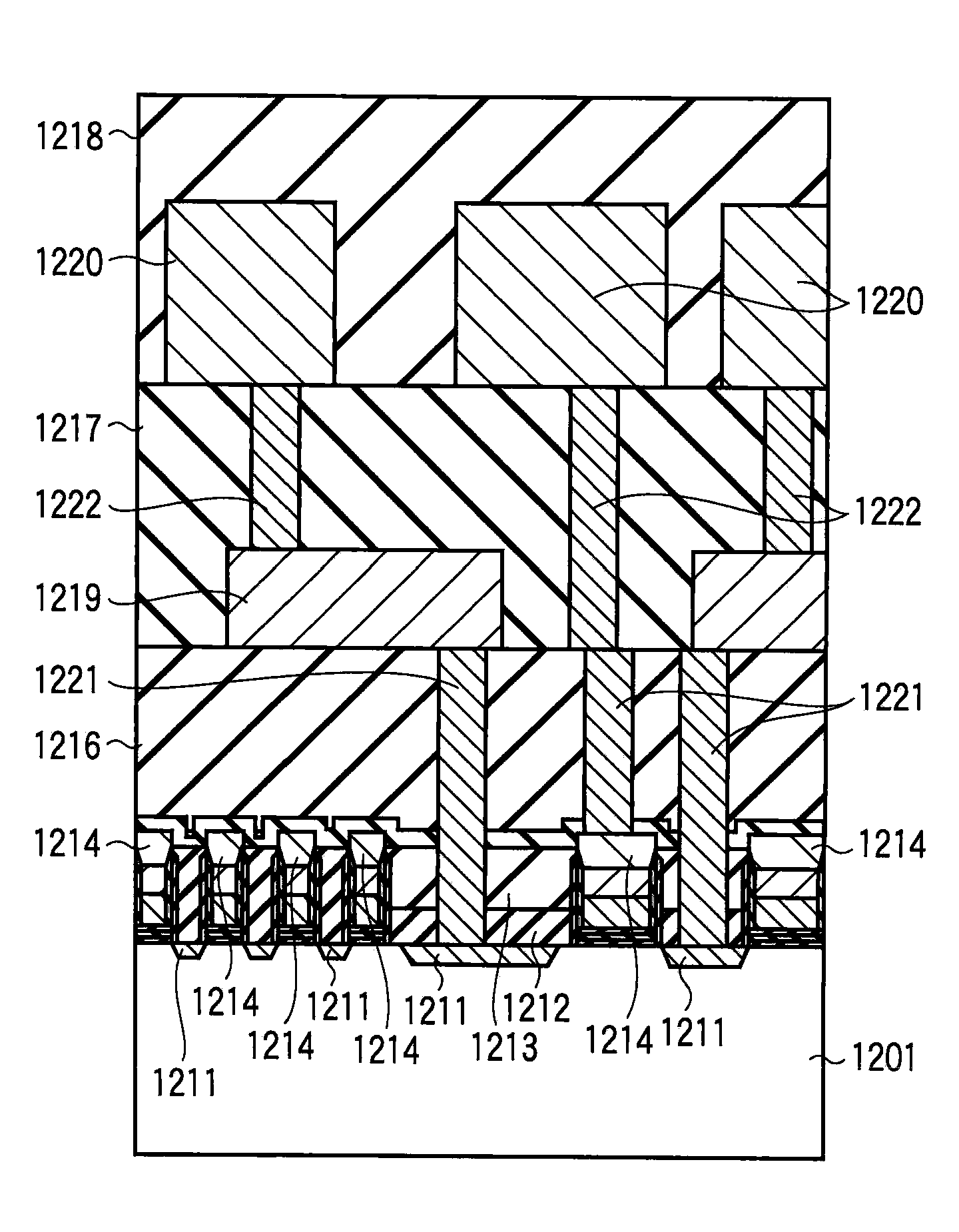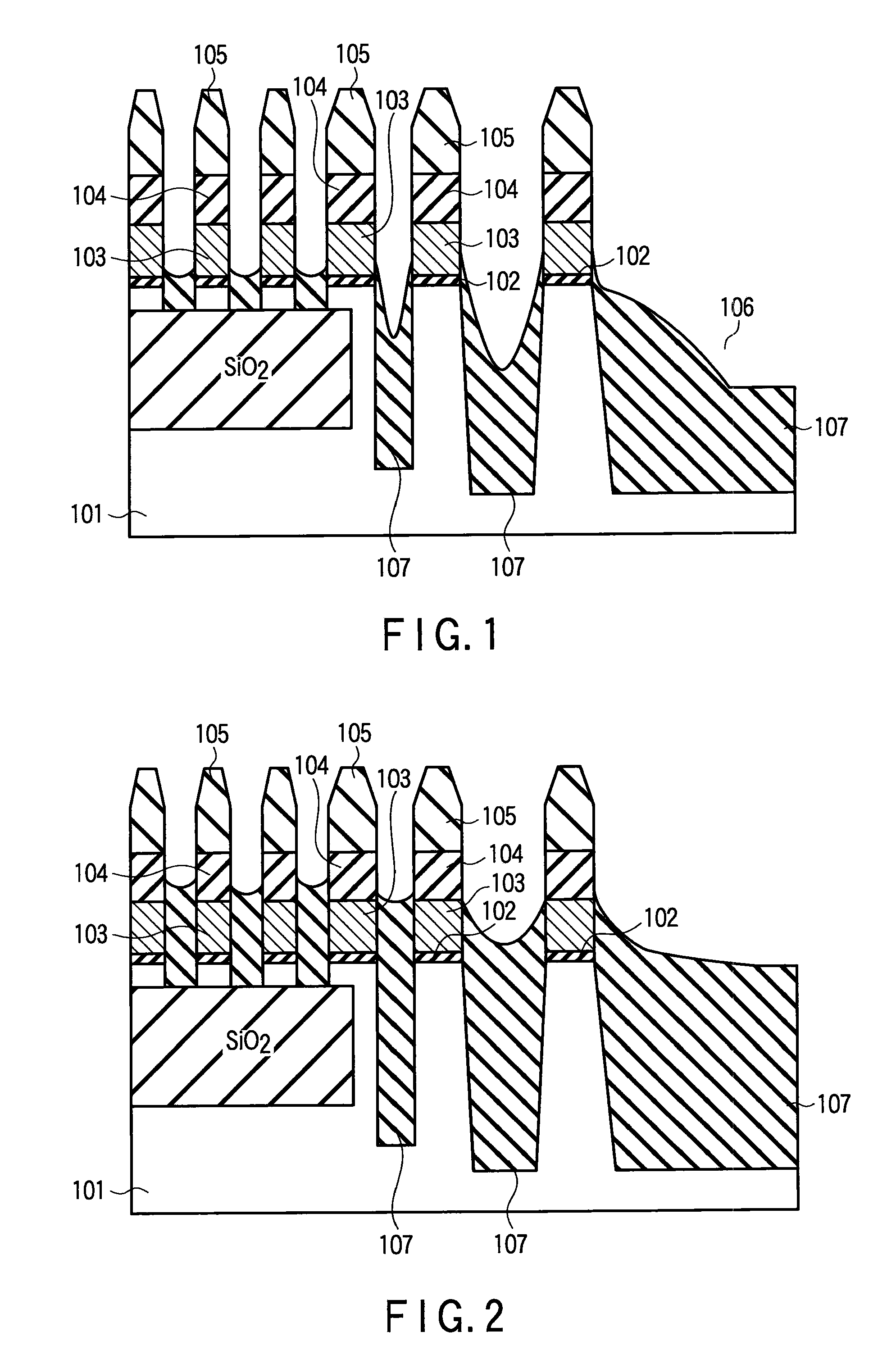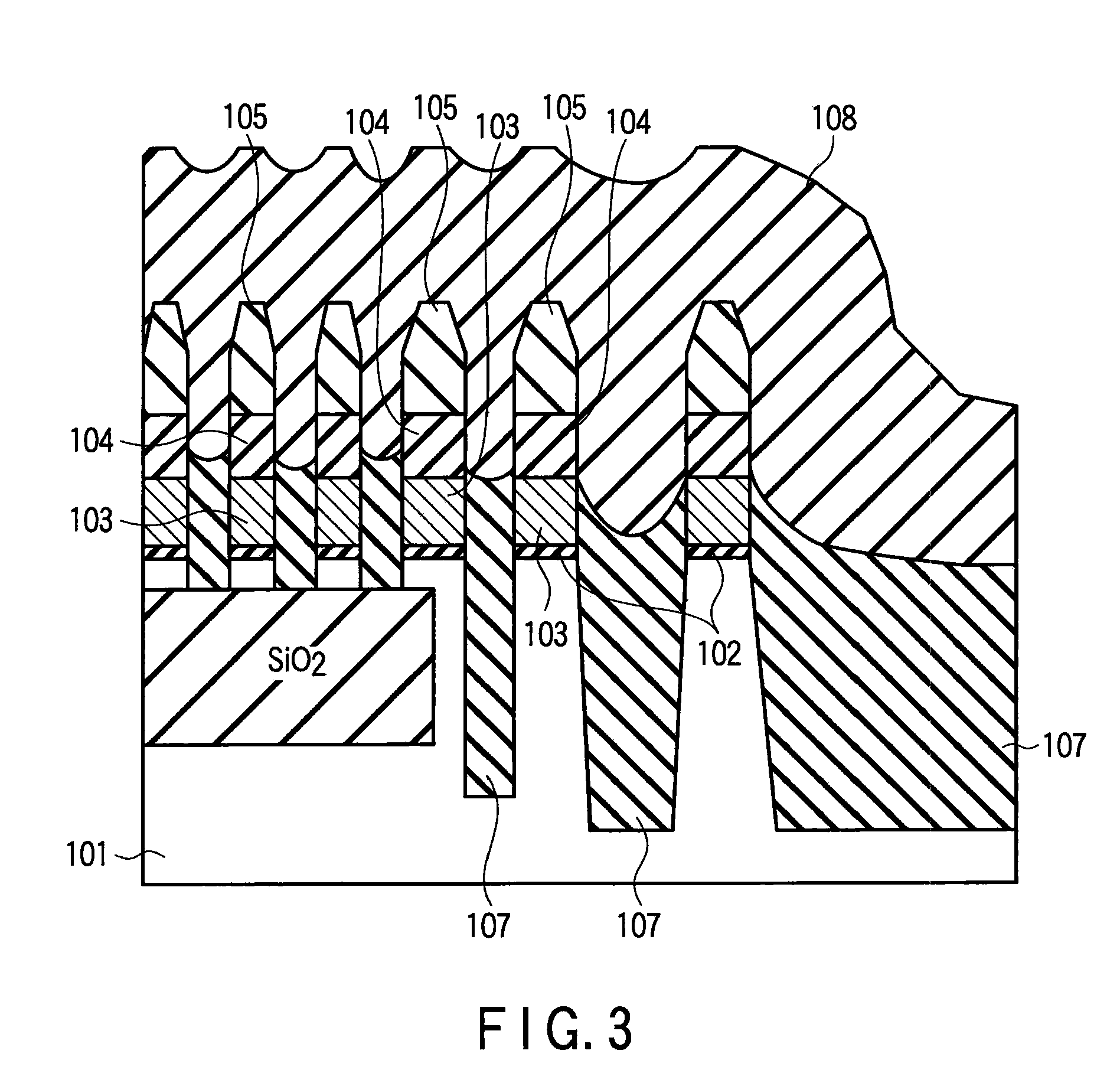Semiconductor device using element isolation region of trench isolation structure and manufacturing method thereof
a technology of isolation structure and element, which is applied in the direction of semiconductor devices, basic electric elements, electrical equipment, etc., can solve the problems of increasing the difficulty of filling the dielectric film, increasing the difficulty of forming the element isolation region, and raising the technical difficulty
- Summary
- Abstract
- Description
- Claims
- Application Information
AI Technical Summary
Benefits of technology
Problems solved by technology
Method used
Image
Examples
first embodiment
[0044]A semiconductor device and a manufacturing method thereof according to the first embodiment of this invention are explained with reference to FIGS. 1 to 7. This embodiment is an example in which a floating gate flash memory is formed on a partial SOI substrate, an O3-TEOS film having high underlying material selectivity is formed as the first dielectric film in an isolation trench for formation of an element isolation region and then an O3-TEOS film having no underlying material selectivity is filled therein as the second dielectric film.
[0045]According to the above system, a narrow STI portion in a cell portion is filled into a bottom-up with respect to the STI bottom portion without causing any seam. Therefore, the seam portion of the O3-TEOS film is etched in the wet etching step performed after formation of the STI portion and a lowering in the breakdown voltage of the cell portion can be suppressed. On the other hand, since the wide STI portion in the peripheral circuit p...
second embodiment
[0061]A semiconductor device and a manufacturing method thereof according to the second embodiment of this invention are explained with reference to FIGS. 9 to 12. Unlike the first embodiment, the present embodiment is an example in which an STI region is filled with an O3-TEOS film having high underlying material selectivity, and a perhydropolysilazane film, which is a type of SOG film in a floating gate flash memory using a bulk silicon substrate. In this embodiment, an O3-TEOS film is filled into a narrow STI portion in which the film quality of the SOG film tends to be degraded and a hybrid film of an SOG film and O3-TEOS film is filled into a wide STI portion in which a preferable film quality can be easily attained even if an SOG film is used.
[0062]Thus, in the case of the O3-TEOS film having high underlying material selectivity, a portion of the O3-TEOS film whose shape is inversely tapered after filling may occur due to the influence of the undercoat state, but occurrence of...
third embodiment
[0074]A semiconductor device and a manufacturing method thereof according to a third embodiment of this invention are explained with reference to FIGS. 13 to 17. This embodiment is an example applied to a charge trap flash memory formed on a partial SOI substrate. In this embodiment, a cell portion of the flash memory is filled with an O3-TEOS film having high underlying material selectivity in a liner form, a wide STI portion of the peripheral circuit portion is filled in a bottom-up form and the STI portion is completely filled by using the film in combination with the SOG film. As is explained in the second embodiment, it is possible to attain the effect that fixed charges and stress can be alleviated by reducing the coating film thickness of the SOG film due to formation of the wide STI portion in the bottom-up form.
[0075]As shown in FIG. 13, a silicon thermal oxynitride film 302 with a thickness of 4 nm used as gate dielectric films, a silicon nitride film 303 with a thickness ...
PUM
 Login to View More
Login to View More Abstract
Description
Claims
Application Information
 Login to View More
Login to View More - R&D
- Intellectual Property
- Life Sciences
- Materials
- Tech Scout
- Unparalleled Data Quality
- Higher Quality Content
- 60% Fewer Hallucinations
Browse by: Latest US Patents, China's latest patents, Technical Efficacy Thesaurus, Application Domain, Technology Topic, Popular Technical Reports.
© 2025 PatSnap. All rights reserved.Legal|Privacy policy|Modern Slavery Act Transparency Statement|Sitemap|About US| Contact US: help@patsnap.com



